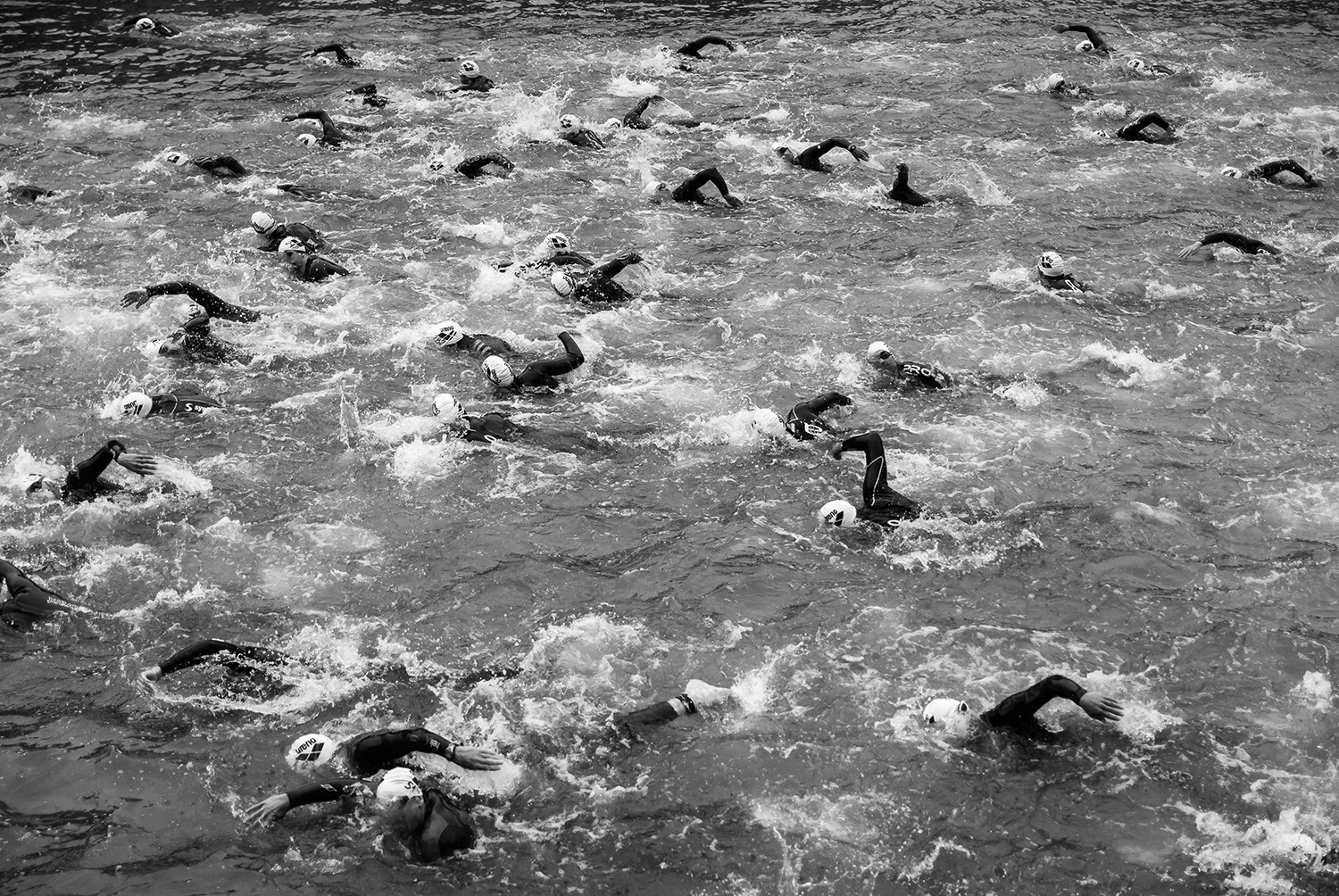How to Train for a Triathlon
Ronnie Ayres March 11th, 2019 Posted In: How-To Tags: Triathlon
How To Train For A Triathlon: Your Triathlon Training Plan
For many, hearing the word triathlon brings to mind images of the iconic, Ironman World Championship in Kona, Hawaii. The 2.6-mile swim, 112-mile bike and 26.2-mile run event, held since 1978, is condensed into a 90-minute TV special and aired each Fall. Spectacular camera angles capture the personal drama and courage of the athletes as well as the beautiful setting and energy zapping, grueling conditions. It’s riveting, no doubt. And for some, it’s inspiring enough to begin a search for how to train for a triathlon!
Though you may be one of those who is specially wired with the desire, ability, and knowledge of how to prepare for a triathlon of that distance, the explosion of the sport is more likely due to the more approachable distances of the Sprint, Olympic and Half Ironman variety. Sprint is a relative term in endurance sports of course. The best international racers finish in about an hour and top Olympic times just under 2 hours. Local events predominately offer versions of these distances and it is very common for registration to sell out quickly.
Get Started in Triathlon Training
So where should you start in formulating a triathlon training plan? Many triathletes have some sort of background in swimming, biking or running. Maybe you love running and want to diversify your fitness with some time in the saddle and in the water. Or, you swam in high school or college and are curious about how that could benefit you in triathlon racing. Perhaps you enjoy all three disciplines already and seek some friendly competition with your peers.
Whatever the motivating factor is, training for triathlons can help attain a well-rounded level of fitness. And everyone develops a “strong leg”, meaning they favor or excel at one of the disciplines over the others. But focusing on improving in all aspects, requires commitment and planning whether you are getting ready for your first local sprint race or you are already inked up with the Ironman logo or Olympic rings.
Expert Advice on Triathlon Training
Joe Maloy, the top USA triathlon finisher in the 2016 Rio Olympics gave us some insight on training and how to prepare for a triathlon of the Olympic distance, 1-mile swim, 25-mile bike, 6.2-mile run. Maloy emphasizes that a solid fitness base is important for all distances and puts in over 30 hours a week during his heaviest training loads.
“The majority of the training is actually pretty similar for Olympic compared to Half Ironman. The biggest difference is the speed requirement is faster for Olympic so the training needs to focus more on that speed. While the swim distance is relatively the same, the bike and run are both over twice as long in the Half Iron. The shorter distance requires a different split/intensity to one’s workouts”, Maloy points out.
Vincent Mancini, a 50-year-old endurance sport athlete from Philadelphia, competes in Half and Full Ironman for “fun and fitness” and trains every day of the week. This year he will compete in his 20th Ironman. His weekly mix is at least 3 days on the bike, 1 long run and 1 speed run, 1 day of pool swimming and 3 days of weight lifting. “As I get closer to a race I will ramp it up with more open water swimming.”
Nutrition
With the type of caloric burn that endurance training generates, nutrition becomes an important part of any triathlon training plan. And according to Maloy, “Diet is huge! We think of medicine as something we put in our bodies to get a desired effect. I like to think of food in the same way.”
Post training nutrition helps you bounce back and fuel up after emptying the tank. “I like replenishing quickly after a workout”, said Maloy. “A favorite is oatmeal, raisins, 15-20g protein powder, honey and sliced almonds soaked in water. I’ll throw it in a container and have it right after a hard training session.”
Obviously, figuring out how to train for a triathlon that fits your lifestyle can be overwhelming. But even with the rigorous training schedule that Maloy adheres to, he knows that it is important to diversify and cross train outside of swim-bike-run. “For me, the answer is surfing”, grinned Maloy. “It’s a great workout, but it’s also a lesson in relaxation. As an athlete there’s sometimes a temptation to force things. In surfing, you instead need to work with what the ocean gives you. It’s a great workout, but also a powerful lesson in relaxation and acceptance.”



i have a hidden disability. I think it would be so cool to create a “handicaped surfer” decal for surfboards or cars to increase awareness!